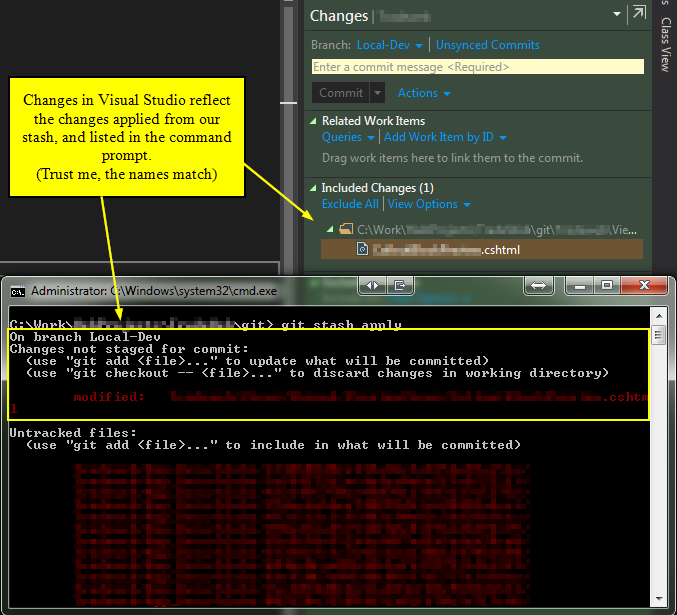

You can read more about it from the git documentation. It can also be used to easily move changes across branches or commits in a repository. Git stash is a very useful feature of git for development, and allows you to store half-finish features or local changes you don't wish to commit.
Git stash list manual#
• git rebase -autostash: Automatically stash before rebasing, and unstash after GIT-STASH(1) Git Manual GIT-STASH(1) NAME git-stash - Stash the changes in a dirty working directory away SYNOPSIS git stash listgit stash apply : Apply a stash without dropping it (same as pop).git stash drop : Drops (deletes) a specific stash git stash list -all If your git stash history is long, you can choose to view an arbitrary number of the most recent entries by providing a number an option.git stash show : View diff of a specific stash.git stash pop: 'Pops' (applies) the latest stash (the one with index 0) and drops it.git stash -m "message here": Same as git stash, attaches a message to be shown in the stash list.git stash list: Lists all stashes, shows index and message.git stash -p: Interactively select hunks to stash.git stash: Stashes all changes (use -a to add files too).For more usage of interactive mode (it is the same mode from git add -i), you can read more from the documentation. Stash my current change temporarily View my stash list Recover a change from stash Delete a stash Delete all stashes Backlog has built-in Git repositories. This is useful if you want to only stash parts of your changes. Using the -p flag when stashing allows you to interactively select hunks ("chunks" of changes) to be stashed or left dirty. You can read more about autostashing from this excellent article. If we meet conflicts, either reset or commit our changes. Apply and drop on one command: git stash pop.
 To clean our stack, manually remove them: drop top stash git stash drop or git stash drop
To clean our stack, manually remove them: drop top stash git stash drop or git stash drop This can also be set to always happen using git config toStash true. git stash list or for more information (log methods) git stash list -stat. When rebasing, git offers the -autostash flag which will: To pop without dropping a stash, use git stash apply, which applies it like pop without dropping. This will show the diff of the stash without applying. To view the contents of a stash, you can use git stash show.

When stashing, you can also use the -a option to avoid having to git add. Aborting fatal: Could not detach HEAD First, rewinding head to replay your work on top of it. You can clear all stashes using git stash clear (but I would discourage using this command, as stashes are very useful!). which resulted in: Created autostash: 019054d error: Your local changes to the following files would be overwritten by checkout: FILENAME Please commit your changes or stash them before you switch branches. For example, we can drop our 0 stash using git stash drop 0. Calling git stash without any arguments is equivalent to git stash push. You can drop (delete) stashes manually, using git stash drop. The modifications stashed away by this command can be listed with git stash list, inspected with git stash show, and restored (potentially on top of a different commit) with git stash apply. # The rest works as expected.: On master: Add b file Advancing Room for improvement: # In case there are no stashes you get one-liner error message. Notice that you can see all stashes, not only the latest one on a the given commit (shown with arrows). Use aliases: # Short and sweet: hashes and graph with all branches and stashes '!sh -c '"'"' git log -oneline -graph -all -decorate $(git reflog show -format="%h" stash -) '"'"' ' Setup git aliases: # Short and sweet: hashes and graph with all branches and stashes To get the tree graph with everything: all branches, all stashes at your fingertips.Įxpanding on a super-useful answer from SicoAnimal, so you don't have to type out all this stuff (especially useful with remote SSH sessions where you don't have any kind of Git UI).ġ.


 0 kommentar(er)
0 kommentar(er)
